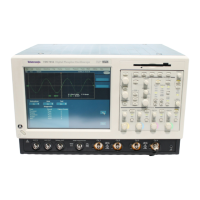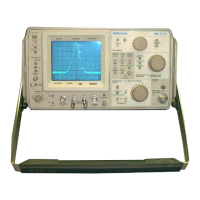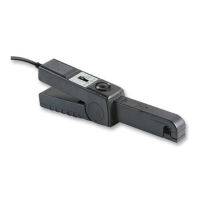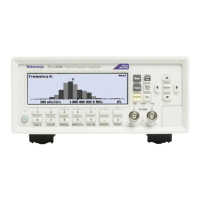Performance Tests
CSA7404B, TDS7704B, TDS7404B, TDS7254B & TDS7154B Service Manual
4- 131
H Move the optical fiber from the optical power meter to the optical
input of the CSA Instrument.
b. CHECK that the CH 1 Mean readout is within the limits listed for the
current wavelength setting in the table. Record the mean on the test
record.
c. Repeat substeps 2.a. and 2.b. until all wavelengths listed in Table 4--15
have been tested.
3. Disconnect the hookup: Disconnect the cables and adapters from the inputs
and outputs.
Before performing the checks for minimum optical bandwidth, you need to have
an understanding of what optical bandwidth is and how it is measured.
Traditionally, the bandwidth of a device or system is defined as the frequency at
which the power out of the same device or system is one half as compared with a
frequency near DC. In the voltage domain, the power dissipated into a resistive
load (for example, a 50 Ω termination of a sampler) is the V
RMS
2
/R where V
RMS
is the RMS of the voltage swing seen at the resistive load, and R is the resistance
value. A logarithmic scale using decibels is typically used to describe a
frequency dependent response of a system.
A value expressed in terms of a decibel relative to a reference is defined as:
dB = 10 × log
Ꮛ
value
reference
Ꮠ
For electrical bandwidths, the power ratio is used so:
dB = 10 × log
Ꮛ
Power
f
Power
DC
Ꮠ
when
Power
f
Power
DC
=
1
2
10 × log
1
2
= –3 dB
In terms of voltage, and resistance, the bandwidth is expressed as:
− 3 dB = 10 × log
⎪
⎧
⎩
V
f
2
R
V
DC
2
R
⎪
⎫
⎭
Check
Optical-to-Electrical
System Bandwidth
